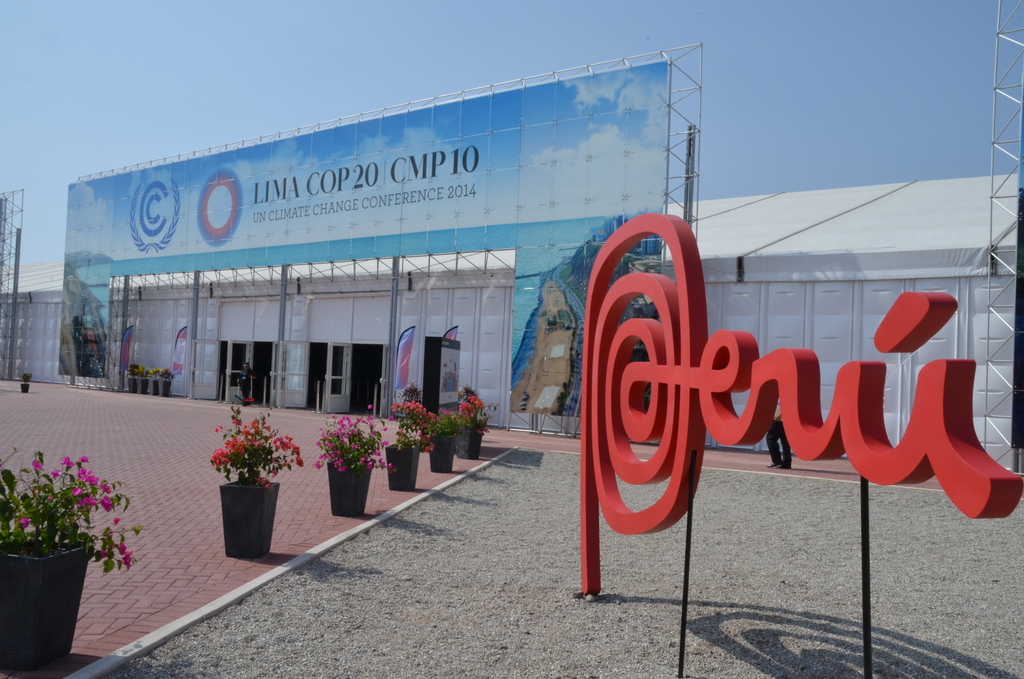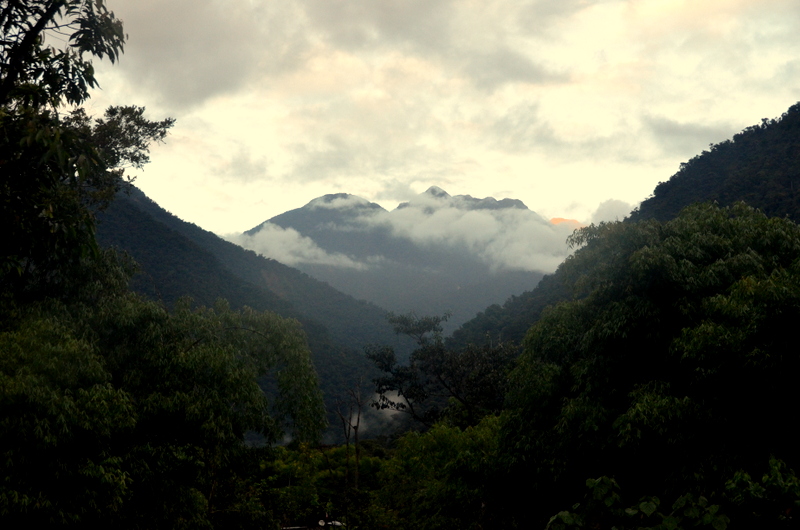
As the United Nations climate negotiations enter their second and final week, some progress – and thus some optimism — was claimed late Monday. They were small steps. And because huge leaps seem impossible in grappling with this global crisis, even small steps take on growing importance.
At a carefully orchestrated press conference, environmental leaders from Brazil, Ecuador, Colombia, Indonesia, Malaysia and Mexico – countries with enormous stores of often imperiled tropical forests – pledged to present baseline levels of their greenhouse gas emissions to international monitoring groups under the UN's REDD+ program.
In essence, the countries are lining up for potential payments from developed countries as a reward for reducing carbon emissions from deforestation and forest degradation (REDD).
Tropical forests play a vital role in slowing global warming by absorbing and storing greenhouse gas emissions. And when they are felled, they also release greenhouse gases on par with emissions from the transportation sector. Thus, their protection and restoration are increasingly viewed as vital to curbing rising temperatures.
"It is a REDD+ day," cheered Manual Pulgar Vidal, minister of the environment of Peru, and president of UN negotiations in Lima, called the COP20. "It is a day to celebrate because we are getting closer to REDD+ implementation in developing countries."
Richard Kinley, deputy executive secretary of the UN Framework Convention on Climate Change (UNFCCC), the body governing for the talks, added: "Significantly enhanced action to reduce global emissions is required in all sectors, and it is required from now on. Land use is one of the key sectors in this area, identified with great potential with many options where there can be a difference. REDD+ is at the heart of this."
REDD+ has been a maligned UN policy in flux for more than a decade, languishing as too complicated and too unworkable to become a genuine tool – a kind of carrot-and-stick market mechanism for reducing emissions. This mechanism would be done by actually paying developing countries to protect their tropical forests rather than level them for development.
Stumbling blocks in recent years have been many, with a significant one being reliable technology.
Can you really measure how much carbon is stored in the tropical forests of vast countries where cattle ranching and soy farms in Brazil, or palm oil plantations and timbering in Indonesia are the driving forces behind deforestation?
Can you actually track greenhouse gas emissions year to year in those countries and determine if emissions are dropping with enough certainty that billions of dollars will be paid by countries like the United States, Norway and Germany as a reward for reducing deforestation?
At the climate talks in Warsaw last year, REDD+ made tangible gains with policy makers in large measure because the technology needed for monitoring emissions was rapidly advancing. Now in Lima, even more advances are on display, giving countries more confidence that REDD+ can actually work.
Alessandro Baccini, a remote sensing scientist with the Woods Hole Research Center in Massachusetts, said that to show a reduction in emissions, countries first need to understand what their rate of deforestation is—a baseline rate of emissions from forest loss and degradation.
Once you have that baseline, Baccini added, countries must ask: "Do we release more or less emissions? If it's less, you qualify for payments."
An enormous scientific effort in remote forest sensing has been expended for years to arrive at the simple equation – more emissions = no payments; less emissions = payments.
For example, quantitative maps generated with satellite imaging — like those by Matt Hansen, a remote sensing scientist at the University of Maryland, and Sassan Saatchi, a senior scientist with the NASA Jet Propulsion Laboratory at Caltech — are now tracking and documenting nation-level deforestation on a regular basis.
Greg Asner, a global ecologist at Stanford's Carnegie Institute of Science, has used aerial surveys to produce the first-ever high-resolution maps of two countries – Panama and Peru – that estimate how much carbon is stored in the forests of those countries, at what density and in which locations.
Suddenly, this information becomes a powerful tool for land-use planning and cracking down on remote, illegal mining and extraction activities. But with REDD+, tracking emissions and the rates of gains or declines, are the key .
"When you combine your deforestation maps with what your carbon stock is, you are able to quantify what the emissions are," Baccini said. "You do that over time, and that's where you get your emissions change to see if you meet the baseline."
This kind of sophisticated data production and measuring simply did not exist three years ago, Baccini said, adding, "For this to really work, countries need to have numbers that they are comfortable with and actually use. The technology is now there."
It should not come as too much of a surprise that the supply side of REDD+ is gathering momentum. Countries that must choose between protecting a million acres of carbon-laden forests or leasing that land to gold miners or oil drillers can now become eligible for payments to eliminate the economic incentive for environmental destruction.
But what about the demand side? At the moment, Norway, the United States, Germany, the United Kingdom and a handful of other developed countries have pledged several billion dollars to the cause of supporting REDD+ initiatives. A target of $100 billion raised by 2020 and then annually has been set. There's a long way to go, and skepticism abounds that enough money will ever voluntarily flow from the demand, or payment, side of REDD+.
Yet in keeping with the optimism on display at the top of the final week of these climate talks in Lima, Kinley with the UNFCCC said the tropical countries coming forward to offer reference levels on their own emissions will not go unrewarded.
"These submissions will contribute to building confidences in generating financial flows for REDD+ action," Kinley predicted. "We will begin to see how result-based payments will be valuable instruments in generating action on the ground. So all in all – today signals that REDD+ under the UN convention actually works, and that we're moving from words on paper to action on the ground."




